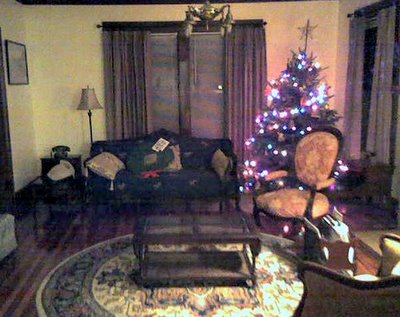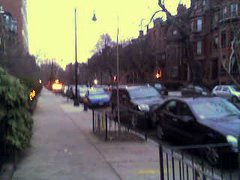The Godfather of the Philippine Revolution.
By Mr. Perry Diaz
The Philippine Revolution of 1896 was supposedly inspired by the martyrdom of the Filipino priests Fathers Jose Burgos, Jacinto Zamora and Mariano Gomez. This is what most Philippine history books claim. On that fateful day of February 17, 1872, the three Filipino secular priests were executed by "garrote" for treason against Spain.
According to the charges made against them and about 50 other priests and civilians, they were involved in the "Cavite Mutiny" on January 20, 1872. Father Burgos was allegedly the mastermind of the uprising. The gruesome public execution by the heinous "garrote" of the Filipino priests -- later known as the GOMBURZA (GOMez BURgos ZAmora) martyrs -- at Bagumbayan (known as Luneta today) outside Intramuros, galvanized the Filipino people and brought to the forefront of debate the notion of independence.
What the history books did not mention was the actual events that led to the martyrdom of GOMBURZA. Fr. Burgos, who took the cudgel of leadership of the Filipino clergy upon the untimely death of Archbishop Pedro Pelaez -- the first Filipino to become Archbishop of the Archdiocese of Manila -- was singled out for allegedly planning a revolution and establish himself as the President of an independent Philippines. Nothing was farther from the truth. All he wanted was for the Filipino clergy to have equal opportunity to serve the spiritual needs of their people.
One might wonder, how did Filipinos become members of the clergy? When the Jesuits were expelled from the Spanish colonies by King Carlos I in 1768, it opened the door for Filipinos to fill the void created by the departure of the Jesuits. Thus, the secularization of the clergy began with the ordination of Filipino priests. However, the friars of the monastic orders disdained the entry of Filipinos into the clergy. After all, they had exclusive control of the Philippine clergy for more than 200 years. The term "Filipino" during the colonial period referred to a descendant of mixed parentage (Spanish father and native mother). At that time, there were approximately 300 Filipino secular priests.
Fr. Pedro Pelaez, a young diocesan priest from Pagsanjan, Laguna was an advocate for the Filipino clergy. He requested the authorities for the appointment of Filipino priests as parish priests in the Archdiocese of Manila. His request was denied on the basis that Filipino priests were unfit and ignorant. Fr. Pelaez insisted that Filipino priests were as qualified as the friars. His persistence paid off when his request was granted on the following conditions: (1) Filipino priests should pass the National Board Examination, (2) The topnotcher of the board examination would automatically become the Parish Priest of the Manila Cathedral, (3) The Parish Priest of the Manila Cathedral would be ex officio the Capitular Vicar of the Cathedral Canons, and (4) In the demise of the Archbishop of Manila, he becomes ipso facto the Acting Archbishop of Manila.
Fr. Pelaez took the National Board Examination and -- to the consternation of the friars -- topped the examination. As agreed upon; Fr. Pelaez became the Parish Priest of the Manila Cathedral, the most coveted parish and the seat of the archdiocese for the entire archipelago. On April 18 ,1862, Archbishop Jose Aranguren passed away and Fr. Pelaez automatically became the Acting Archbishop of Manila and that of the entire colony, an event that infuriated the friars.
Prior to Fr. Pelaez's ascendancy to the archbishopric, Queen Isabella II in 1859 -- after 91 years of banishment -- allowed the Jesuits to return to the Philippines. The Jesuits were assigned to Mindanao displacing the Recollects. The Recollects lobbied for Queen Isabella II to turn over to them the parishes in Cavite and Manila held by the Filipino clergy. On September 10, 1861, Queen Isabella II issued a royal decree for the Recollects to take over the parishes in Cavite and Manila.
Archbishop Pelaez was hurt by the royal decree and decided to write a letter to the Queen requesting the revocation of her decree for reasons of justice and humanity. He also defended the integrity of the Filipino clergy who were displaced by the Recollects. This caused a rift with the friars who began attacking Archbishop Pelaez accusing him of insurrection and separation from Mother Spain. The calumny against Archbishop Pelaez was intensified. The handwriting was on the wall. But fate saved Archbishop Pelaez from the wrath of the friars. On June 3, 1863, while Archbishop Pelaez was having his weekly confession inside the Manila Cathedral, an earthquake occurred shattering the Cathedral. Archbishop Pelaez was buried in the ruins of the Cathedral; thus, denying the friars the vengeance that they wanted to exact upon him.
The attack against Archbishop Pelaez continued even after his death. La Verdad, the official organ of the friars in Madrid published scathing articles against Archbishop Pelaez, the Secular Clergy and the Filipino people. Fr. Burgos, who was then the Parish Priest of the Manila Cathedral, wrote a lengthy reply, "Manifesto to the Noble Spanish People," and published it anonymously in Manila. This irked the friars who suspected him as the author of the manifesto. That was the "death sentence" for Fr. Burgos.
When 200 soldiers in the Cavite armory revolted, Fr. Burgos was implicated in what became to be known as the "Cavite Mutiny." The "mutiny" occurred on January 20, 1872. It was over the next day with the arrest of 12 Filipino priests and 42 Filipino civilians. After a hastened trial, they were found "guilty" by a military court martial and the priests were executed by "garrote" and most of the civilians were executed by a firing squad. A few were sent to exile. Interestingly, those whose lives were spared were Masons. And so was Rafael de Izquierdo, the Governor General at that time.
In the ensuing 20 years after the "Cavite Mutiny," the martyrdom of Frs. Burgos, Gomez, and Zamora roused the Filipino people. They began to entertain the notion of separation and independence by whatever means. The new breed of educated "illustrados" became the catalyst for the Revolution of 1896.
Had Archbishop Pedro Pelaez survived the earthquake in 1863, he would have been one of the martyrs. It was Archbishop Pelaez's advocacy for the rights of the Filipino clergy that planted the seeds of the Revolution. Yet, he was never acknowledged by historians for his role that led to fruition of the Philippine independence movement. until Rev. Dr. Josemaria Luengo, after years of research and perusal of original documents in archives around the world, wrote his book, :"History of the Philippines focus on PELBURGOMZA: Galvanizers of Filipino Freedom and Independence 1812-1872," and published in November 2000.













